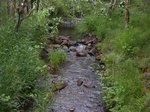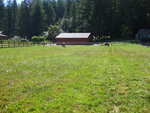

The Washington State University Clark County Extension is gearing up for its 16th year of teaching about small acreage stewardship as registrations are open for the Living on the Land series starting this month.
Beginning Aug. 29 the extension, in partnership with the Clark County Public Works Clean Water Program, will host a series of weekly sessions looking at ways for property owners to care and maintain their land. The classes will look at everything from water, weeds, waste and soil among other topics, bringing in experts from the area to teach best practices for their land.
WSU Clark County Extension Small Acreage Program Coordinator Amber Lefstead said that the series was a great opportunity to learn better land management, having already served nearly 500 who had graduated from the past 15 years’ worth of events.
“Not only do you learn stewardship practices, but also how to effectively manage your problem areas such as muddy pastures and weeds,” Lefstead said.
In anticipation of the upcoming courses Lefstead gathered some information from several local experts on a few of the topics.
Property Inventory
“The first step to stewardship requires understanding the property’s assets” WSU Clark County Extension Director Doug Stienbarger said. “Taking an inventory of resources and creating a map of the property helps with goal planning.”
Lefstead said a map helps landowners note specific resources, such as an orchard, barn or water body, and any problem areas, such as a weedy field or standing water. Stienbarger notes that as one plans out new goals for their property, such as expanding pasture, they can look back at their map and see how current resources support or hinder new goals.
Soil
Soil remains one of the most critical resources of the land, Lefstead said. If well cared for it supports the growth of crops and helps pastures soak up the rain.
Portland-area Concentrates Inc. manager Heather Havens said testing soil was the first step to keeping it healthy.
“A soil test will show if you need to apply fertilizer. Applying too much fertilizer can do more harm than good,” Havens said. “For instance, you have to be very careful adding potassium to your soil; if you add too much, you could end up with a moonscape.”
“Another way to ensure healthy soil is to avoid tilling your soil more than absolutely necessary,” Camas-based LJC Feeds owner Gordon French said. “There is a whole world of beneficial insects, bacteria and fungi alive in the soil creating a network of nutrients for your plants’ roots. Rototilling destroys 90 percent of these beneficial soil microbes.”
Water
Rivers, streams and lakes are amazing resources, Lefstead said, but livestock traffic, manure and contaminated stormwater can make them muddy and contribute to harmful algae blooms.
“People can help protect water resources by planting native trees and shrubs around waterways to filter pollutants and add shade,” Clark County Public Works Clean Water Specialist Eric Lambert suggested. “Restricting livestock access with fencing keeps livestock from eroding stream banks and polluting water with manure, and limiting fertilizers and pesticides reduces other contaminants.”
Waste
“Poorly maintained septic systems will result in inadequately treated or untreated sewage,” , Clark County Public Health Environmental Health Specialist Sean Hawes explained. “Once the septic system performance is impacted it increases the risk of wastes polluting surface and groundwater, and can create a direct exposure of sewage pathogens to people.”
Hawes said regular septic system inspections can reduce the chance of repairs or replacement needed down the line.
Stienbarger added that animal waste also causes problems in our rivers and streams, noting that horses and cows can produce 50 to 60 pounds of manure daily.
“Compost the manure to create a resource you can use and be sure to cover your manure pile with a tarp during the rainy season to keep the manure from running off into our local water bodies,” Stienbarger said.
Grazing
Animals overgrazing is the easiest way to kill a pasture because plants need to rest, Lefstead said, adding it was important to follow the “3-inch rule.”
“When grass gets grazed to 3 inches, give it a rest,” Gene Pirelli, Oregon State University Extension Specialist and pasture expert explained. “This allows plants time to recover and store the stem and root energy necessary to grow high quality forage. Only return livestock to a pasture when the grass reaches at least 6-8 inches.”
Weeds
Clark County Noxious Weed Control Board Coordinator Casey Gozart advised landowners to create an Integrated Weed Management (IWM) plan which combines several weed management strategies into one continuous program.
“Survey your property annually for weeds and adapt your management strategies based on your success and your goals,” Gozart stated, adding that individuals should reach out to Clark County Vegetation Management for help in identifying weeds and choosing management strategies.